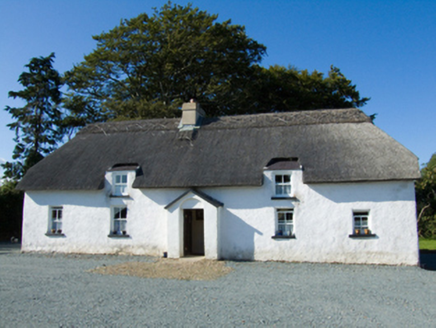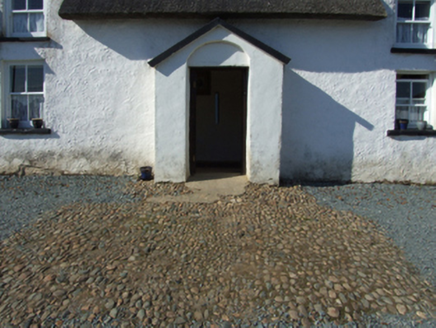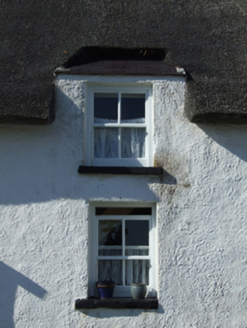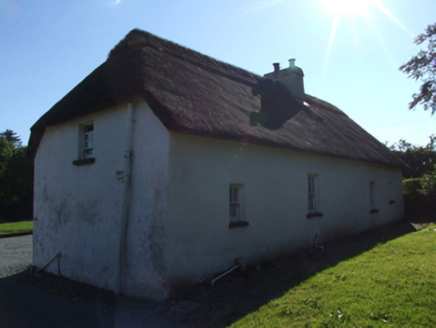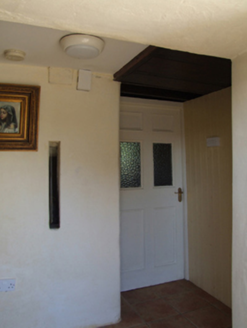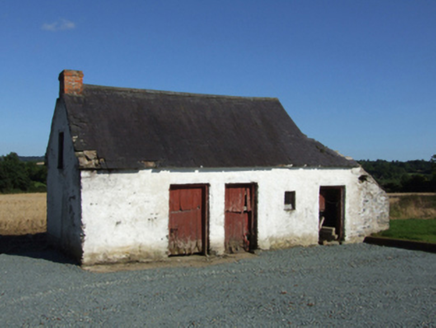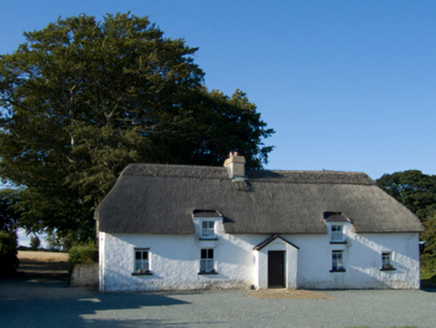Survey Data
Reg No
15702044
Rating
Regional
Categories of Special Interest
Architectural, Historical, Social
Original Use
Farm house
In Use As
Farm house
Date
1700 - 1840
Coordinates
303389, 141248
Date Recorded
21/08/2007
Date Updated
--/--/--
Description
Detached three- or five-bay single-storey lobby entry thatched farmhouse with dormer attic, extant 1840, on a T-shaped plan centred on single-bay single-storey gabled windbreak. Occupied, 1987. "Restored", ----, to accommodate occasional use. Replacement hipped gabled water reed thatch roof overhanging lean-to slate roofs to window openings to dormer attic with chicken wire-covered exposed hazel lattice stretchers to raised ridge having exposed scallops, cement rendered off-central chimney stack having capping supporting terracotta pots, and blind stretchers to eaves having blind scallops. Limewashed roughcast battered walls. Square-headed central door opening in round- or segmental-headed recess with concrete threshold, and concealed dressings including timber lintel framing replacement glazed timber boarded or tongue-and-groove timber panelled door. Square-headed flanking window openings with shallow sills, and concealed dressings including timber lintels framing two-over-two timber sash windows having part exposed sash boxes; six-over-six timber sash windows to gables to side elevations with two-over-two timber sash windows to rear (north) elevation centred on six-over-six timber sash windows. Interior including central lobby with "spy hole". Set in relandscaped grounds including part stone cobbled courtyard.
Appraisal
A farmhouse identified as an integral component of the vernacular heritage of County Wexford by such attributes as the rectilinear lobby entry plan form centred on a characteristic windbreak; the construction in unrefined local materials displaying a battered silhouette with sections of "daub" or mud suggested by an entry in the "House and Building Return" Form of the National Census (NA 1901; NA 1911); the disproportionate bias of solid to void in the massing; and the high pitched roof latterly showing a non-indigenous Turkish water reed thatch finish. Having been well maintained, the elementary form and massing survive intact together with quantities of the original or sympathetically replicated fabric, both to the exterior and to the interior, thus upholding the character or integrity of the composition. Furthermore, an adjacent limewashed outbuilding (extant 1903) continues to contribute positively to the group and setting values of a neat self-contained ensemble having long-standing connections with the Fenlon family including Michael Fenlon (d. 1915), 'Farmer late of Ballymoteybeg [sic] County Wexford' (Calendars of Wills and Administrations 1916, 207).

